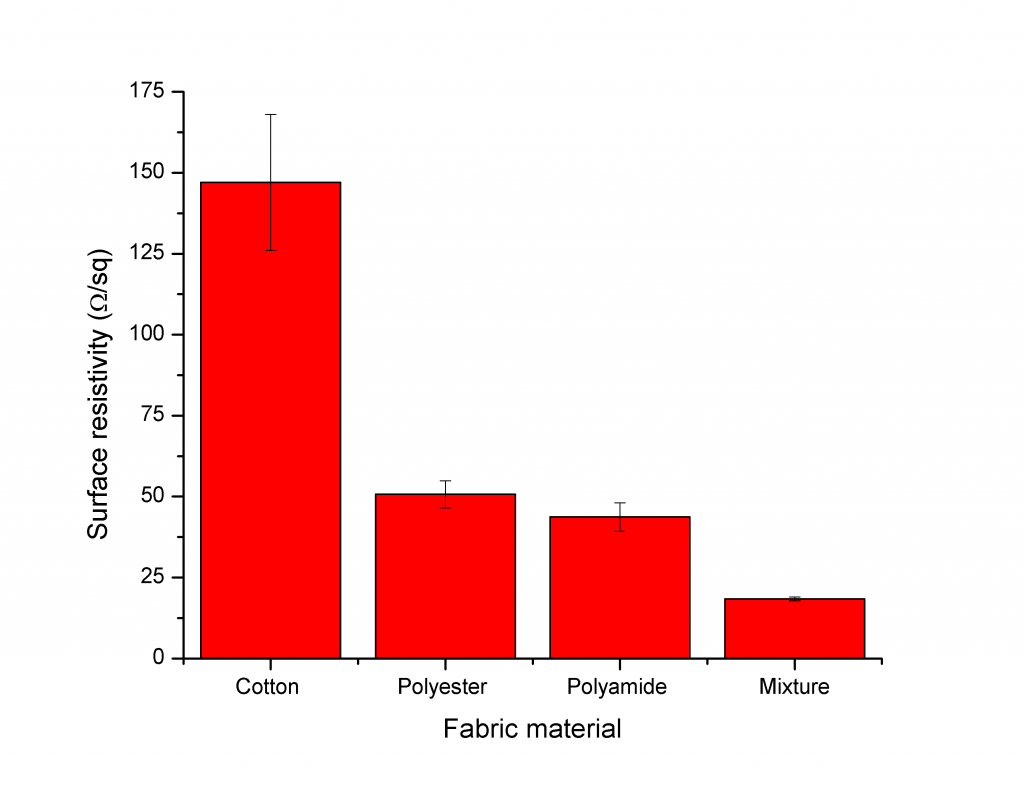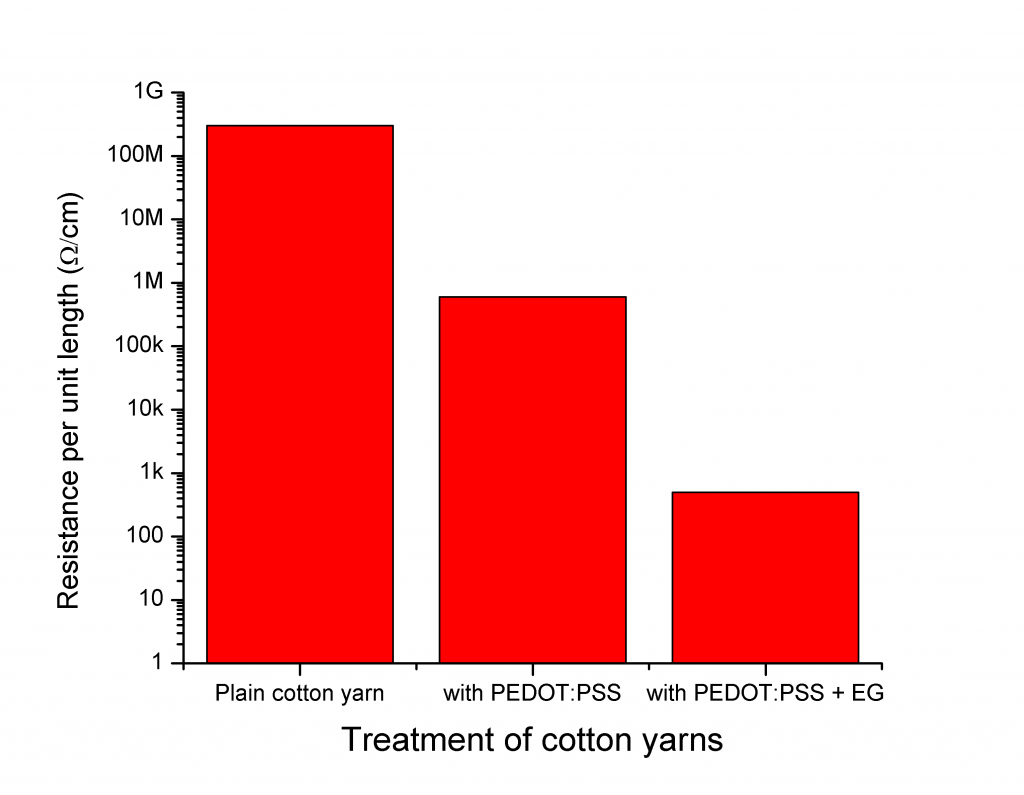Conductive Textiles
Conductive textiles
By Jose F. Saenz-Cogollo, Ph.D. (josefsaenz@gmail.com)
The term “conductive textiles” can be referred to a broad range of materials with very different electric conductivity. Traditionally it has been used for antistatic finished fabrics which have a rather low conductivity, fibers modified by means of the incorporation of inorganic conductive particles in the spinning process, yarns modified with conductive metal coatings or textiles interweaved or stitched with metallic fibers. A relatively recent approach to obtain conductive textiles is the use of intrinsically conductive polymers (IGP) which have attracted the attention of researcher in the last years because of the relatively high conductivities that can be obtained following a straightforward liquid deposition process without substantially modifying the mechanical properties of substrates. Our research on conductive textiles focus mainly on the use of the IGP poly-3,4-ethylenedioxythiophene doped with poly(styrene sulfonate) (PEDOT:PSS) which is one of the most commercially successful IGP because of the excellent characteristics of its conductive state such as low band gap, superior electrochemical and thermal stabilities, and high transparency.
We treat common textile materials like cotton, polyester and Lycra with the conductive polymer PEDOT:PSS, transforming normally insulating materials into conductors. Conductive textiles can be manufactured into many shapes, printed, sewn, or knitted into fabrics, or even woven in fiber forms directly into textile structures.
Main features:
- It’s possible to treat a wide range of textile materials including yarns and fabric made of cotton, polyester, polyamide, spandex, silk, etc.
- “Low cost” treatment based in the deposition of a conductive polymer and other organic solutions in liquid phase.
- Minimum resistance obtained with a single yarn so far (100% cotton yarn n. 30): 450 Ohm/cm
- Minimum surface resistance obtained with a fabric so far (fabric of mix fibers polyester, viscosa, spandex): 7 Ohm/sq



